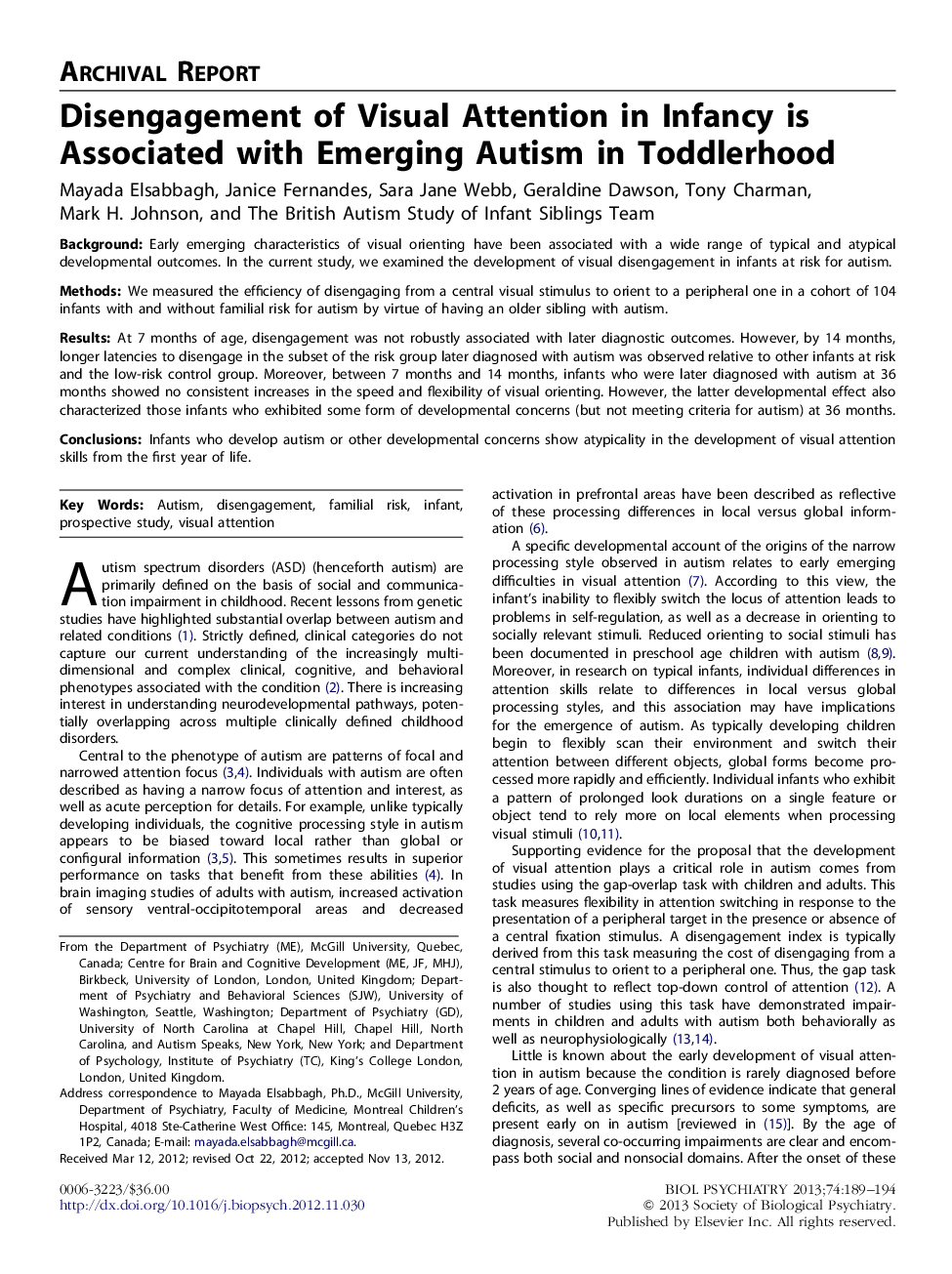| Article ID | Journal | Published Year | Pages | File Type |
|---|---|---|---|---|
| 6227403 | Biological Psychiatry | 2013 | 6 Pages |
BackgroundEarly emerging characteristics of visual orienting have been associated with a wide range of typical and atypical developmental outcomes. In the current study, we examined the development of visual disengagement in infants at risk for autism.MethodsWe measured the efficiency of disengaging from a central visual stimulus to orient to a peripheral one in a cohort of 104 infants with and without familial risk for autism by virtue of having an older sibling with autism.ResultsAt 7 months of age, disengagement was not robustly associated with later diagnostic outcomes. However, by 14 months, longer latencies to disengage in the subset of the risk group later diagnosed with autism was observed relative to other infants at risk and the low-risk control group. Moreover, between 7 months and 14 months, infants who were later diagnosed with autism at 36 months showed no consistent increases in the speed and flexibility of visual orienting. However, the latter developmental effect also characterized those infants who exhibited some form of developmental concerns (but not meeting criteria for autism) at 36 months.ConclusionsInfants who develop autism or other developmental concerns show atypicality in the development of visual attention skills from the first year of life.
